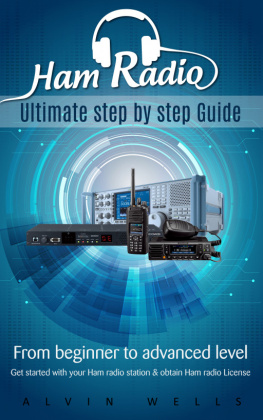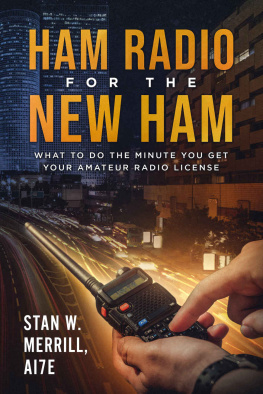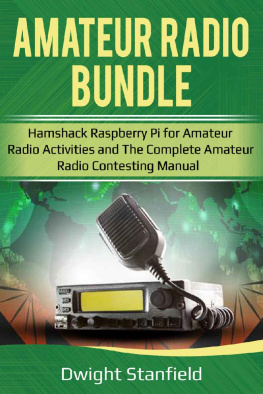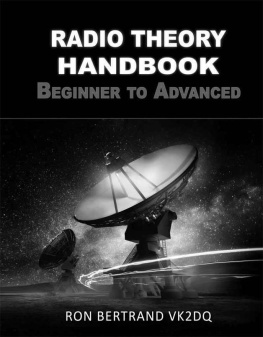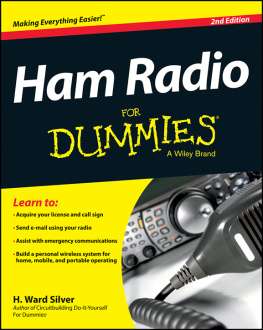Contents
Landmarks
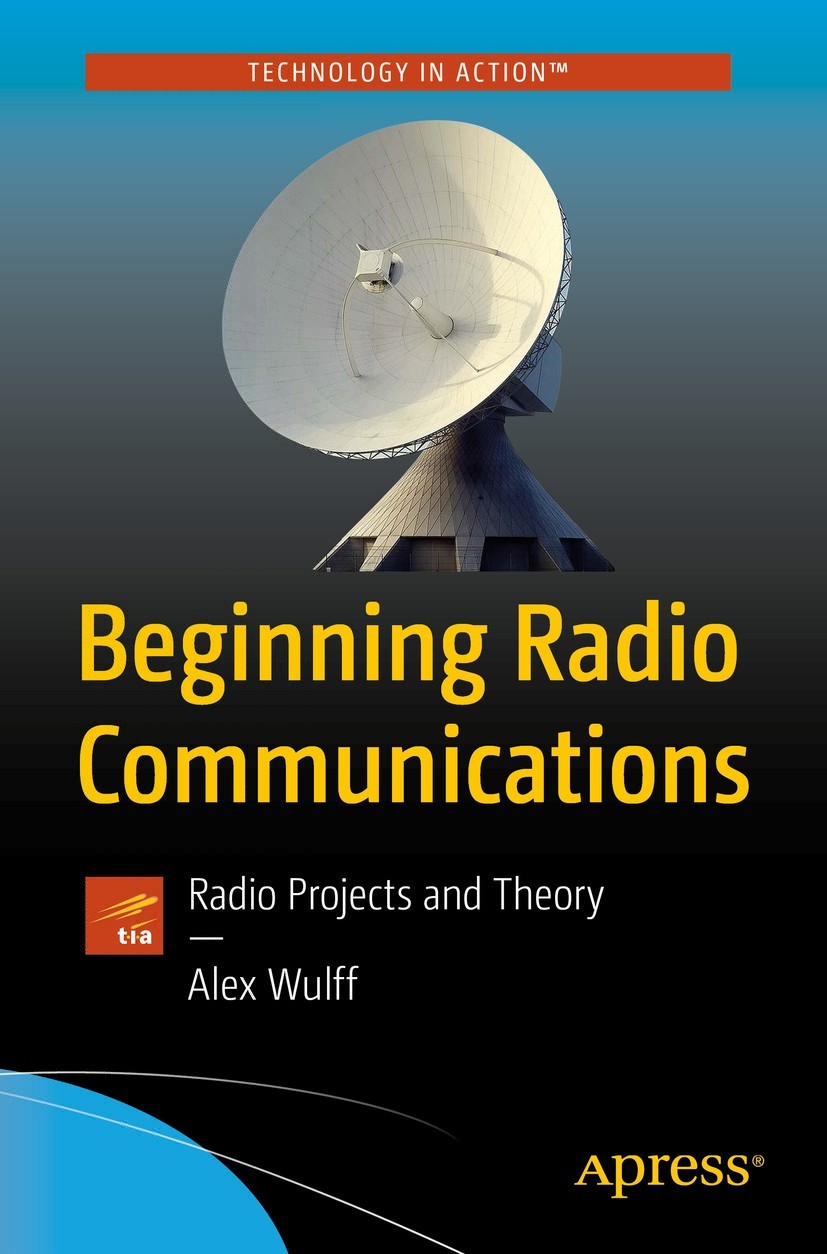
Alex Wulff
Beginning Radio Communications
Radio Projects and Theory
Alex Wulff
Cambridge, MA, USA
Any source code or other supplementary material referenced by the author in this book is available to readers on GitHub via the books product page, located at www.apress.com/978-1-4842-5301-4 . For more detailed information, please visit http://www.apress.com/source-code .
ISBN 978-1-4842-5301-4 e-ISBN 978-1-4842-5302-1
https://doi.org/10.1007/978-1-4842-5302-1
Standard Apress
Alex Wulff 2019
This work is subject to copyright. All rights are reserved by the Publisher, whether the whole or part of the material is concerned, specifically the rights of translation, reprinting, reuse of illustrations, recitation, broadcasting, reproduction on microfilms or in any other physical way, and transmission or information storage and retrieval, electronic adaptation, computer software, or by similar or dissimilar methodology now known or hereafter developed.
Trademarked names, logos, and images may appear in this book. Rather than use a trademark symbol with every occurrence of a trademarked name, logo, or image we use the names, logos, and images only in an editorial fashion and to the benefit of the trademark owner, with no intention of infringement of the trademark. The use in this publication of trade names, trademarks, service marks, and similar terms, even if they are not identified as such, is not to be taken as an expression of opinion as to whether or not they are subject to proprietary rights.
While the advice and information in this book are believed to be true and accurate at the date of publication, neither the authors nor the editors nor the publisher can accept any legal responsibility for any errors or omissions that may be made. The publisher makes no warranty, express or implied, with respect to the material contained herein.
Distributed to the book trade worldwide by Springer Science+Business Media New York, 233 Spring Street, 6th Floor, New York, NY 10013. Phone 1-800-SPRINGER, fax (201) 348-4505, e-mail orders-ny@springer-sbm.com, or visit www.springeronline.com. Apress Media, LLC is a California LLC and the sole member (owner) is Springer Science + Business Media Finance Inc (SSBM Finance Inc). SSBM Finance Inc is a Delaware corporation.
I dedicate this book to my familytheir unwavering support in all my endeavors means the world to me.
Table of Contents
About the Author
Alex Wulff
is a maker and student of electrical engineering at Harvard. Alex has always had a passion for sharing his love of technology with the world and has given numerous talks encouraging youth and adults alike to get involved with the maker movement. He has a special interest in radio technologies and their increasingly important role in todays connected society.
Alex is very active in the maker community and posts a variety of projects online. To see his work, visit www.AlexWulff.com/go
Alex Wulff 2019
A. Wulff Beginning Radio Communications https://doi.org/10.1007/978-1-4842-5302-1_1
1. Introduction and Materials
Communication is perhaps the most import tool in humanitys toolbox. Without it, the scope and depth of the human races ambition would be vastly limited. New means of communication precipitated important milestones in our time on this planet. Radio waves allowed for the first wireless communications, then gave us broadcasting of news, music, and entertainment. It is radio communications that carry us into a new age of global connectivity, allowing billions of devices to communicate with one another.
Without radio technologies, space travel, cell phones, satellite Internet, and many other technologies we take for granted would be next to impossible. Radio waves are comprised of electromagnetic radiation, which travels at the speed of light. Until humanity expands its communications into the quantum realm, the speed of light remains the fastest speed at which humans can transmit information.
With this text, you will gain an intuitive understanding of how humans have harnessed radio waves to achieve light-speed communication across vast distances. Everything from how radio waves propagate to how information is encoded and transmitted is covered. Well also discuss specific communications systems and how they operate. Throughout the text, youll get the opportunity to put your skills into practice with real communications systems and hardware. In one exercise, youll use a software-defined radio (SDR) to download images from weather satellites. In another, youll use microcontrollers and radio modules to send packets of data back and forth. In yet another exercise, youll use a satellite to talk with individuals up to a thousand miles away.
A large portion of this text is devoted to amateur radio, or ham radio as its popularly known. Amateur radio is a global community of licensed radio operatorsthis book will show you how to get licensed, and help you learn how to use amateur radio hardware.
The purpose of this text is not to provide you with a complete and in-depth picture of a particular element of radio communications. Rather, this text is designed to give you an intuitive understanding of various important concepts in radio communications and how they fit into the larger picture. By understanding propagation of radio waves, youll be able to deduce how various obstacles will affect the path of communications. By understanding different types of antennas, youll be able to identify an antenna structure out in the world and determine its use. By understanding modulation and how information is encoded in radio waves, you can look at a communications protocol and surmise how it works. This text will give you the information necessary to form a natural understanding of the preceding topics, in addition to many more.
Materials
This is, by nature, a hands-on text. As such, youll need to purchase some materials to complete the demonstrations and exercises. I recommend purchasing this hardware now so you have it when you need it later on in the book, even if you dont get around to using it for a while. Each item is listed under the chapter in which it is required.
Chapter : Project: Satellite Imagery
This is the first chapter in which materials are required. The purpose of this chapter is to utilize a device called a software-defined radio to download live images from a US weather satellite. Without the software-defined radio, youll have no way to download data!
Software-Defined Radio Kit
Think of a software-defined radio as similar to a radio tuner like the one on your car. It can analyze incoming radio waves of a user-selectable frequency and output this information in a variety of ways. We will be using this particular kit to pick up transmissions from satellites as well as listen to people talk on the air.
The actual software-defined radio (SDR) is a small dongle that plugs into a USB-A port on a computer. Also included in this kit are all the antennas, mounts, and cables necessary for all the projects using the SDR. This software-defined radio is shown in Figure .


